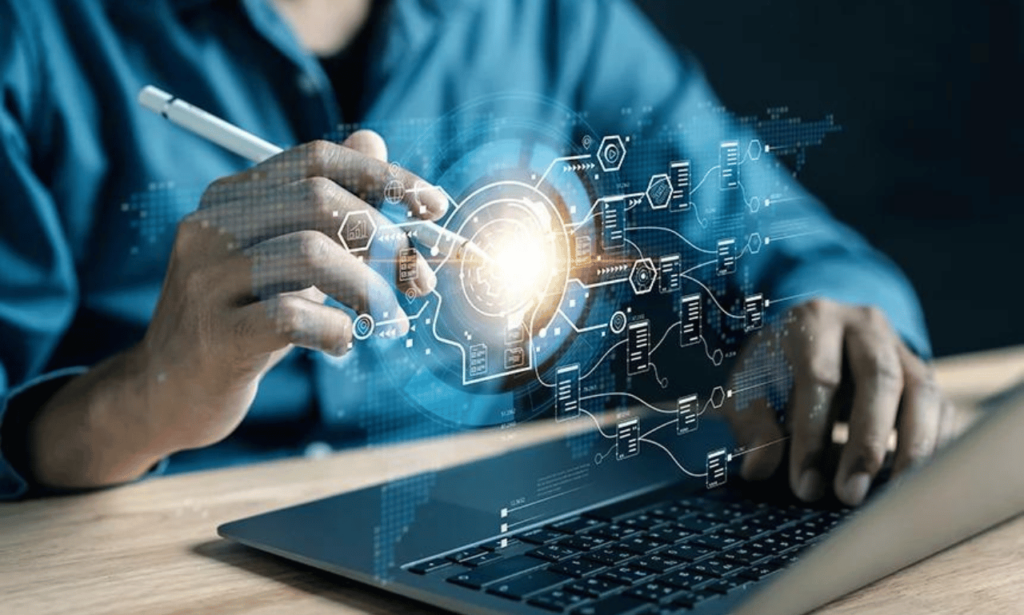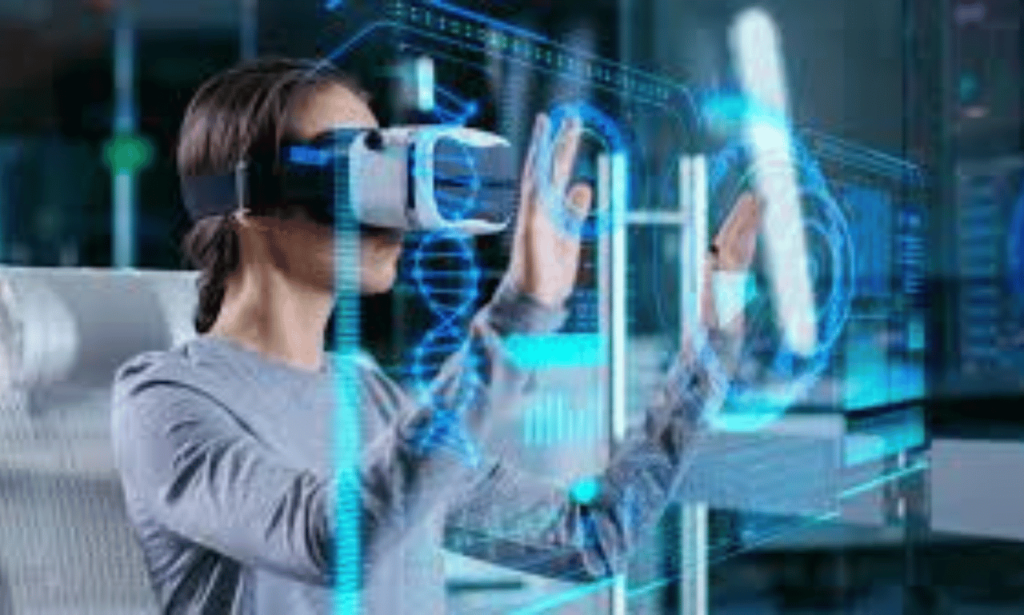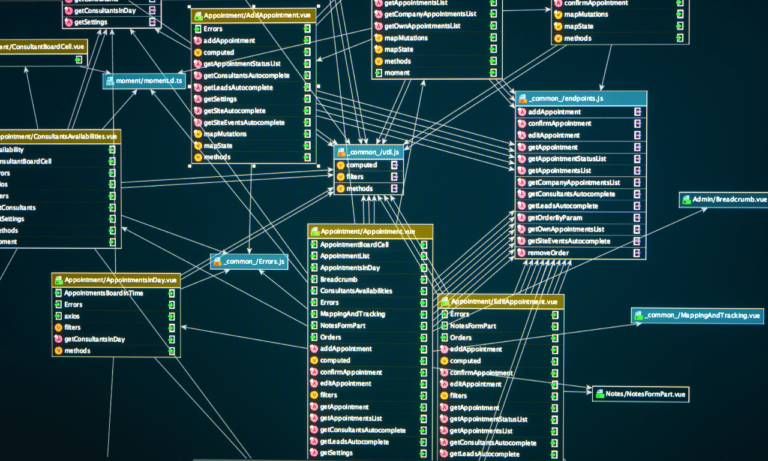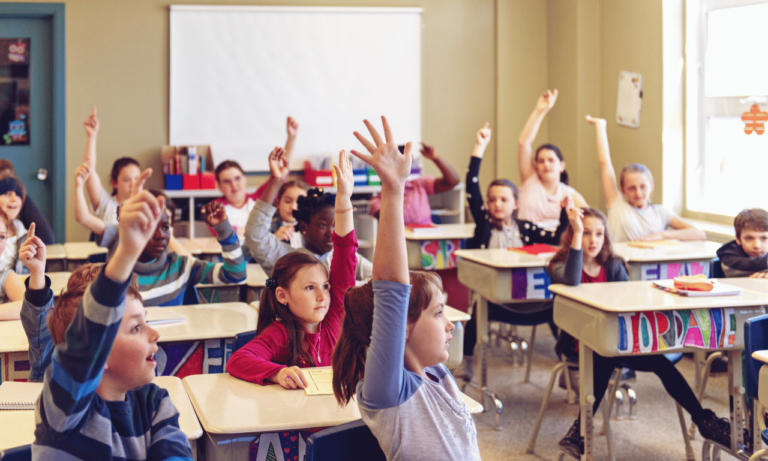Phone:
(+65)8319-0742
The landscape of education is continuously evolving, with adaptive learning environments at the forefront of this transformation. These environments leverage AI-powered educational platforms to create truly personalized education experiences. By recognizing and catering to individual learning styles and capacities, they embody a modern approach that holds the potential to revolutionize the way we learn.
Gone are the days of one-size-fits-all educationâpersonalized learning technology promises an education that grows and adapts with you. These smart learning environments (SLEs) are not just about technology; they are about creating a harmonious blend of learning analytics, intelligent tutoring, and real-time feedback that aims to enrich the journey of every learner.
Key Takeaways
- Adaptive learning environments personalize the educational experience using modern technology.
- AI-powered educational platforms are core to delivering education that adjusts to learning needs in real-time.
- Smart learning environments integrate various technologies to foster a dynamic, individual-centric learning experience.
- The shift toward personalized education signifies a departure from traditional methods to a more tailored approach.
- Personalized learning technology is the catalyst in the transition from conventional teaching to interactive, adaptive education.
- Learning in smart environments is designed to be flexible, efficient, and responsive to the unique progress of each student.
The Evolution of Learning: From E-Learning to Smart Learning Environments (SLE)
The journey through the education landscape has witnessed a remarkable transformation, as the evolution of learning embraces the age of Smart Learning Environments (SLEs). This progression is notably fueled by the integration of interactive digital learning tools and the implementation of adaptive teaching strategies, enhancing the educational experience to new, personalized heights.
Understanding Smart Learning Environments
Characterized by their adaptive nature, SLEs are designed to personalize the way education is delivered, maximizing efficacy and engagement. These environments rely substantially on machine learning in education to analyze and adapt to student needs dynamically. Through adaptive learning strategies, SLEs are not a one-size-fits-all solution; rather, they are flexible frameworks that evolve with learners.
The Role of Smart Devices and Intelligent Technologies
Within SLEs, the proliferation of smart devices and intelligent technologies has been instrumental in monitoring and guiding the learning journey. Personalized content is rendered through various devices, responding in real-time to the learners’ interactions, making the entire educational process more responsive and attuned to the individual’s pace and style of learning.
Features of Smart Learning Environments and Their Benefits
The hallmark features of Smart Learning Environments include their ability to adapt content in real-time and to foster natural interaction, leading to a host of benefits. These benefits span enhanced engagement, flexibility, and personalization that align with the learnersâ unique needs.
| Feature | Description | Benefits |
|---|---|---|
| Adaptive Learning | Utilizes algorithms to adjust the instructional material based on student performance. | Individualized pace and approach increase knowledge retention. |
| Interactive Tools | Engages students with multimedia content and interactive scenarios. | Boosts participation and motivation through varied content delivery. |
| Intelligent Feedback | Provides immediate, personalized feedback based on student responses. | Enhances understanding and corrects misconceptions promptly. |
| Community Connectivity | Facilitates collaboration and communication among learners and educators. | Promotes social learning and the sharing of diverse perspectives. |
Defining Personalized Adaptive Learning (PAL)

At the heart of today’s educational innovation is Personalized Adaptive Learning (PAL), a methodology that elevates personalized instruction systems to new, unprecedented levels. PAL is the result of a significant paradigm shift whereby the focus is no longer on a one-size-fits-all approach, but on an adaptive learning increasingly personalized to meet the unique demands of each learner.
This approach fully leverages data-driven educational solutions, utilizing analytics to finely tune learning experiences. In the realm of PAL, data is not just a set of numbers; it’s the backbone of educational transformation, offering a myriad of insights into student learning patterns, preferences, and capabilities. By harnessing this power, educators can craft content and learning journeys that deeply resonate with each student.
One could say that personalized adaptive learning is where technology meets empathy. It’s where sophisticated algorithms are sensitive to the nuances of human learning. The principle underlying PAL is simple yet revolutionary: Education should adapt to the student, not the other way around.
| Features of PAL | Benefits |
|---|---|
| Real-time data analysis | Adapts to learning pace and style |
| Personalized feedback loops | Enhances engagement and retention |
| Responsive content adjustment | Supports mastery of concepts |
| Individual performance tracking | Enables targeted interventions |
| Cognitive and emotional metrics | Promotes well-rounded development |
In essence, PAL embodies the confluence of traditional pedagogical wisdom with innovative personalized adaptive learning strategies. Platforms such as Knewton symbolize this convergence, illustrating how technology can be harnessed to create dynamic, effective, and truly personalized educational experiences.
From Data-Driven Instruction to Adaptive Learning Technologies

The transformative impact of big data has redefined the foundations of educational strategies, leading to an educational technology research paradigm that embraces data-driven instruction. These advancements are not simply augmenting traditional teaching methods, but initiating a complete shift towards a more data-centric approach, critical for knowledge retention and recall.
The Influence of Big Data on Educational Paradigms
Data-intensive science in education has become an influential factor in reshaping educational models, facilitating a move away from one-size-fits-all teaching. With big data at the forefront, educators and researchers can now delve deeply into learning patterns, creating frameworks that are far more aligned with the individual needs of students.
Education Data Mining and Learning Analytics
The synthesis of education data mining and learning analytics represents a cornerstone of contemporary education. These fields supply the actionable insights necessary for the refinement of data-driven instruction, propelling the development of platforms and tools that contribute to effective learning experiences.
Systematic Approaches to Personalized Adaptive Learning
Implementing a systematic approach to personalized adaptive learning, leveraging the predictive power of data to craft bespoke educational pathways, deftly illustrates the burgeoning influence of this paradigm. These methodologies not only tailor content but also shape pedagogical strategies that foster sustained engagement and deeper comprehension.
| Feature | Impact on Instruction | Benefit to Learner |
|---|---|---|
| Real-time Feedback | Enables instant adjustments to teaching strategies | Improves knowledge absorption and addresses misconceptions |
| Adaptive Learning Pathways | Customizes content delivery based on learner’s pace | Enhances engagement by aligning with individual learning styles |
| Behavioral Analytics | Inform teaching methods with data on student interactions | Supports personalized study habits and boosts recall |
| Outcome Predictions | Anticipates challenges and optimizes curriculum | Fosters confidence through transparent progression metrics |
The Interplay of Personalized, Adaptive, and Differentiated Learning

As educational methodologies evolve, the distinction and convergence of personalized instruction systems, and adaptive and differentiated learning models become increasingly evident. By harnessing the capabilities of AI-powered educational platforms, the fabric of contemporary education is being rewoven to create more smart learning environments that foster individual growth and comprehension. These innovative approaches are grounded in the integration of interactive digital learning tools, which facilitate an in-depth understanding of each student’s unique learning pathway.
Analyzing Core Elements of Personalized Learning
Personalized learning is driven by the core principle of tailoring educational experiences to align with individual student needs and objectives. Through the use of sophisticated analytics and predictive models, personalized learning strategies effectively map out a curriculum that respects and responds to the learnerâs pace, interests, and goals for a truly customized educational journey.
Understanding Adaptive Learning as a Technology and Method
In contrast, adaptive learning utilizes technological prowess to modify learning content in real-time, adapting to studentsâ responses and performance. This dynamic approach leverages cutting-edge AI-powered educational platforms to create a responsive educational experience that continually adjusts to individual learner progress and proficiency levels, ensuring that every student can achieve their full potential.
Comparative Analysis of Learning Methods
Drawing a parallel between differentiated instruction and the personalized learning model, it’s clear that while they share some elements, they serve distinct purposes within the educational ecosystem. Differentiated instruction broadly aims to cater to heterogeneous groups, while personalized learning delves deeper into the individual student’s learning process, aspiring for a bespoke educational experience enabled by interactive digital learning tools.
| Learning Method | Target | Implementation | Tools and Technologies |
|---|---|---|---|
| Personalized Learning | Individual Student Needs | Custom-tailored Curriculum | Data Analytics, AI Algorithms |
| Adaptive Learning | Performance-based Adjustments | Real-time Content Modification | Adaptive Software, Learning Analytics |
| Differentiated Instruction | Group Heterogeneity | Varied Teaching Techniques | Assessment Tools, Instructional Strategies |
The synergy of these pedagogical methods is transforming classrooms across the globe, catalyzing the rise of smart learning environments that prioritize the studentâs active involvement in their learning process. Such environments are facilitated by sophisticated interactive digital learning tools and personalized instruction systems, which, together with AI advancements, are crafting a future where education is not just a one-size-fits-all solution but a diverse, multifaceted tapestry of learning opportunities.
Adaptive Learning: Personalization in Real-Time
In an age where efficiency is king, real-time adaptive learning stands as a beacon of personalized education. Like a global positioning system for academics, this innovative approach analyzes a learner’s responses and swiftly adjusts to create an educational path tailored to their needs. The end result? An efficient and effective learning process that narrows focus on areas for improvement, saving learners the precious commodity of time. This is personalized learning at its peak, fostering an environment where each student’s mastery of skills is the primary goal and where the learning experience molds to fit their individual growth trajectory.
Key to this seamless experience is the integration of sophisticated data analytics, which underpin the adaptability of learning paths, ensuring the journey is as unique as the fingerprints of each learner. As the dynamics of knowledge retention are understood better, these technologies fine-tune educational content delivery to maximize understanding amd remembrance. Personalized learning experience becomes not just a method but an ongoing interaction between technology and the human mind, designed to respect and adjust to the pace at which a student learns.
The unparalleled strength of real-time adaptive learning lies in its universal appeal. It transcends traditional educational models by actively engaging a generation raised in a digital world. Through interactivity and immediacy, this form of learning speaks directly to the rhythms of the connected era, showcasing a remarkable capacity to maintain student engagement whilst securing knowledge retention. In essence, adaptive learning doesnât just repackage educational material; it revolutionizes the framework of learning itself, creating a future where education is not just a journey, but a highly personalized adventure that evolves in unison with both academic and personal progression.
FAQ
What are Adaptive Learning Environments?
Adaptive Learning Environments are personalized education systems that utilize AI-powered educational platforms to tailor the learning experience to individual student needs and preferences. They are part of smart learning environments that adapt content and teaching strategies to optimize learning outcomes.
How have learning environments evolved from E-Learning to Smart Learning Environments?
The evolution of learning environments has progressed from electronic learning (e-learning) to m-learning (mobile learning), and now to Smart Learning Environments (SLEs). SLEs use interactive digital learning tools, adaptive teaching strategies, and machine learning in education to create more dynamic and responsive educational experiences.
What are Smart Learning Environments, and what benefits do they offer?
Smart Learning Environments are advanced educational settings that integrate smart device technologies and intelligent technologies, such as learning analytics and cloud computing. They offer benefits like environment recognition, personalized instruction systems, and community connectivity, leading to enhanced student engagement and flexibility.
What does Personalized Adaptive Learning (PAL) entail?
Personalized Adaptive Learning (PAL) involves customizing educational content and activities in real-time based on each learner’s characteristics and requirements. PAL systems are informed by data-driven educational solutions and analytics to provide a highly responsive and dynamic learning experience.
How does Big Data influence today’s educational paradigms?
Big Data has significantly influenced educational paradigms by providing rich data sets that can be analyzed to enhance the education process. This involves data-driven instruction, educational technology research, and applying data-intensive science to create more effective and personalized learning experiences.
What is the relationship between education data mining and learning analytics?
Education data mining and learning analytics work together to process and interpret data related to learning activities. This collaboration helps to understand and improve learning by providing insights that can drive systematic approaches to personalized adaptive learning.
How do personalized, adaptive, and differentiated learning interact?
Personalized, adaptive, and differentiated learning approaches work in tandem to cater to individual student needs. While personalized learning focuses on students’ individual characteristics, adaptive learning uses technology to adjust to their performance in real-time. Differentiated learning involves structuring learning experiences for diverse groups of students, an element that is intrinsic to both personalized and adaptive learning.
Can you explain how adaptive learning provides a personalized learning experience in real-time?
Adaptive learning technologies use real-time data to continuously adjust instruction and content to match a learner’s performance, abilities, and preferences. This dynamic approach ensures a personalized learning experience that is both efficient and effective, leading to better knowledge retention and recall.

















